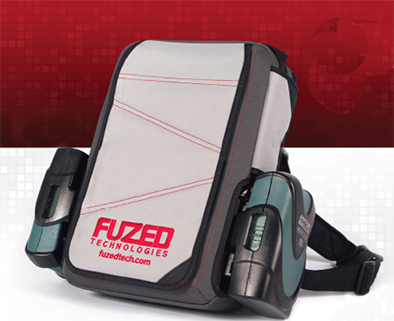WCIU-TV Develops ENG Cell-Bonding Transport Pack

CHICAGO—Weigel Broadcasting is relatively small as TV station groups go, with three full- and eight low-power TV stations in the Midwest, including the flagship, independent WCIU-TV in Chicago.
At the same time, Weigel is an aggressive broadcast innovator that started launching national dot-twos in 2008. The list includes MeTV, Movies! (with Fox), Heroes & Icons, Decades (with CBS). Weigel’s dot-twos have more than 300 affiliates around the country. Weigel also started another project eight years ago that has now morphed into a commercial product the broadcaster will be demonstrating at the NAB Show in Las Vegas next week: the Fuzed Technologies cell-bonding ENG pack. Weigel Vice President of Technology Kyle Walker elaborates.
TV Technology:Tell us about the Fuzed Technologies backpack.
WALKER: We started developing in this space in 2008, but for internal company use only. This year at NAB, we are making our product available. What makes our product unique is HEVC/H.265 encoding, 1080p and 4K support, and the ability for users to connect their iPhones and Androids directly to our product to retrieve video and photos from an “eye witness’” on the street. Also, users can wirelessly send media files to and from the studio using their camera or laptop at speeds six to eight times faster than other solutions used today.
TV Technology: What specifically drove development of the Fuzed Technologies pack?
WALKER: At that time, there were no solutions available. We were looking for ways to expand on-the-street coverage in our news markets without buying a larger fleet of ENG and uplink trucks. In 2009, we had a working prototype and within a short time after, we started using our product internally.

TV Technology: How much news do Weigel stations produce, and do they share?
WALKER: Weigel produces over 90 hours of news each week across our three terrestrial markets. There is some sharing where appropriate.
TV Technology: Why develop your own backpack cell-bonder? Weren’t there plenty of fully developed platforms to choose from?
WALKER: We started experimenting with cellular bonding before any solutions were available. In 2008, we performed a live broadcast from downtown Chicago with 3G bonded cellular. It wasn’t HD quality, but we proved it could work.
In 2009, Sprint was the first carrier to implement 4G. We were there with Sprint at their launch parties in Atlanta and Las Vegas, broadcasting their red carpet event over their 4G cellular network. Since that time, we have perfected our technology and at NAB 2016, we will be offering it to our broadcast partners. We are the first cellular bonding solution to offer HEVC/H.265 encoding and resolutions up to 4K.
TV Technology:Weigel is a relatively small operation as far as broadcast TV station groups go. This type of technology development seems more suited to a larger station group. Is this typical of Weigel? Have they homegrown other tech in the TV workflow?
WALKER: Yes. We have always looked for ways to create efficiencies. Many times, we partner with existing broadcast vendors but sometimes we develop our own. For example, we are running our own automation system for on-air playout. That same system is driving not only our terrestrial stations, but it also drives all of our national networks.
MeTV has the most complex SCTE-35 triggering system of any diginet to date. We developed this workflow in house and it is being used to control the network equipment located at every MeTV affiliate across the country. We do this in situations where we feel that we can do it more efficiently and for a better price point.
TV Technology: What would you say drives this internal development at Weigel? Is it the unique needs of a small station group with multiple diginets?
WALKER: Somewhat, but our situation is similar to other groups who have broadcast and cable operations. Many times, an existing solution is available, proven and it just works. Other times, it requires solutions from multiple vendors to make a workflow. Sometimes, the solution we are looking for requires additional development from a vendor where the costs are such that it may make more sense for us to take it on ourselves. There can be an advantage to doing this. You own the roadmap, you’re not at the mercy of others, but it’s a balance. We base our decision on our needs, timelines and economics. In the case of bonded cellular, when we first had the idea, no such solution existed. By the time we had a prototype product, solutions began to appear, but we decided to continue our development. I’m glad we did. I’m very proud of what we have today.
TV Technology: Do you have an army of coders and engineers?
WALKER: Ha! Not an army. Steve Jobs once said “A small team of A+ players can run circles around a giant team of B and C players.” That is the culture that we have tried to create not only at our team at Fuzed, but for our engineering teams in general.
TV Technology: Where does an operation like Weigel recruit talent?
WALKER: That is one of the challenges I see in broadcast today. As we move to an IP-centric workflow, stations need local and regional teams of efficient, forward thinking engineers. IT knowledge is very important, but there is still a need for someone who understands the overall broadcast news and operations workflow. We’re fortunate to have a great team, and we continue to look for great talent. I’ve found networking on sites like Linkedin can be useful. We’ve also used some firms that specialize in finding talent that have IT and broadcast/production experience.
The professional video industry's #1 source for news, trends and product and tech information. Sign up below.
